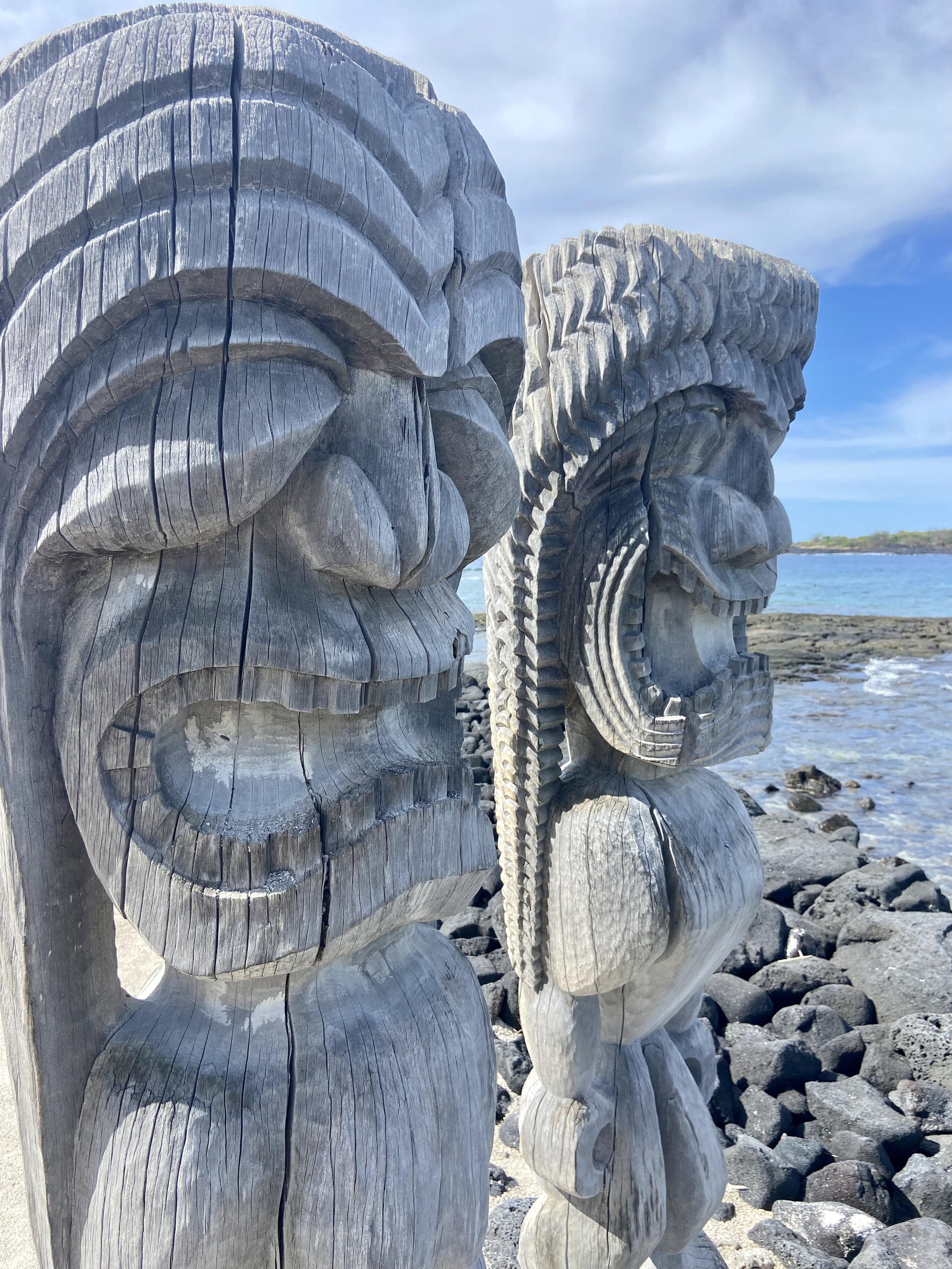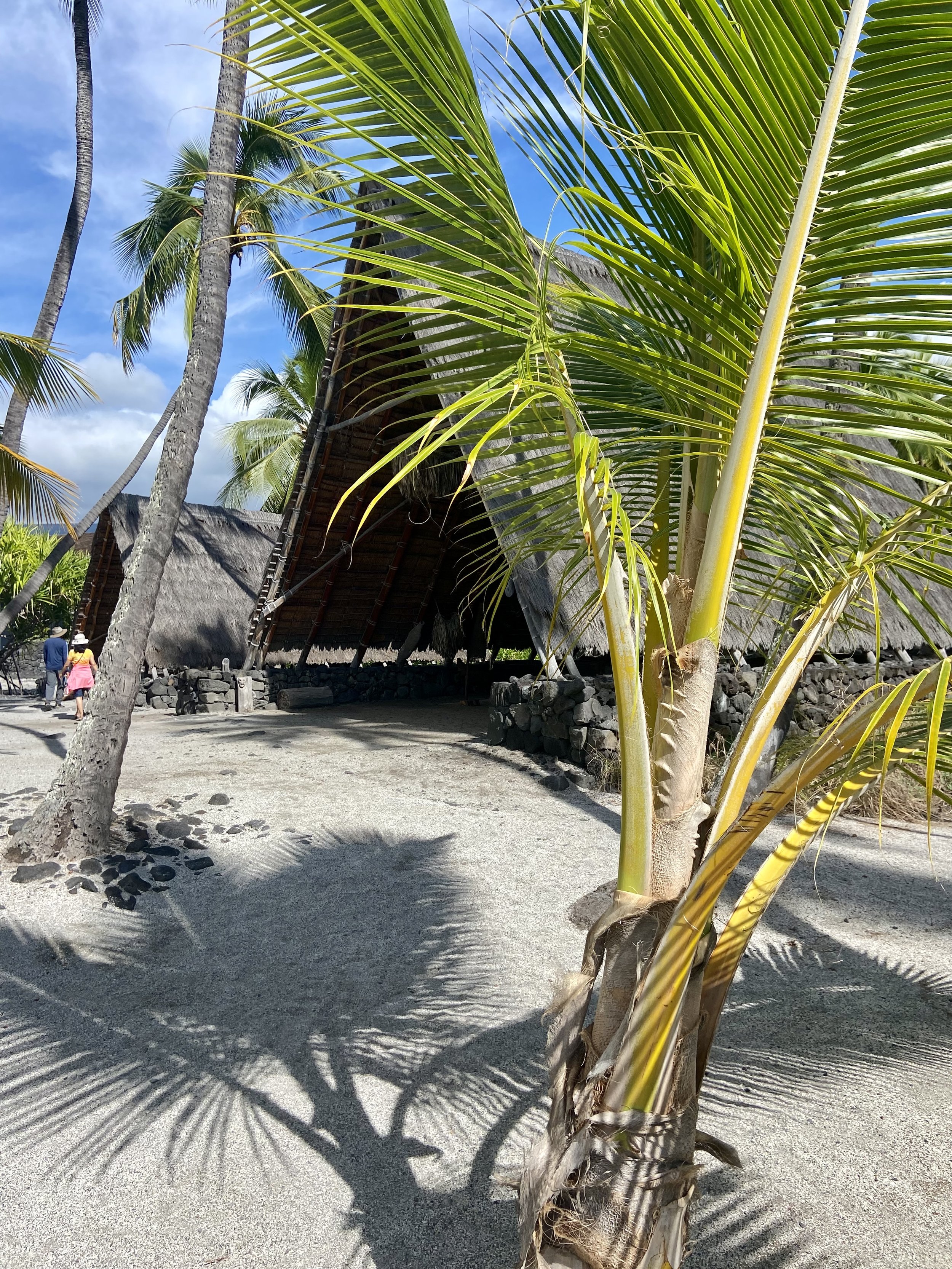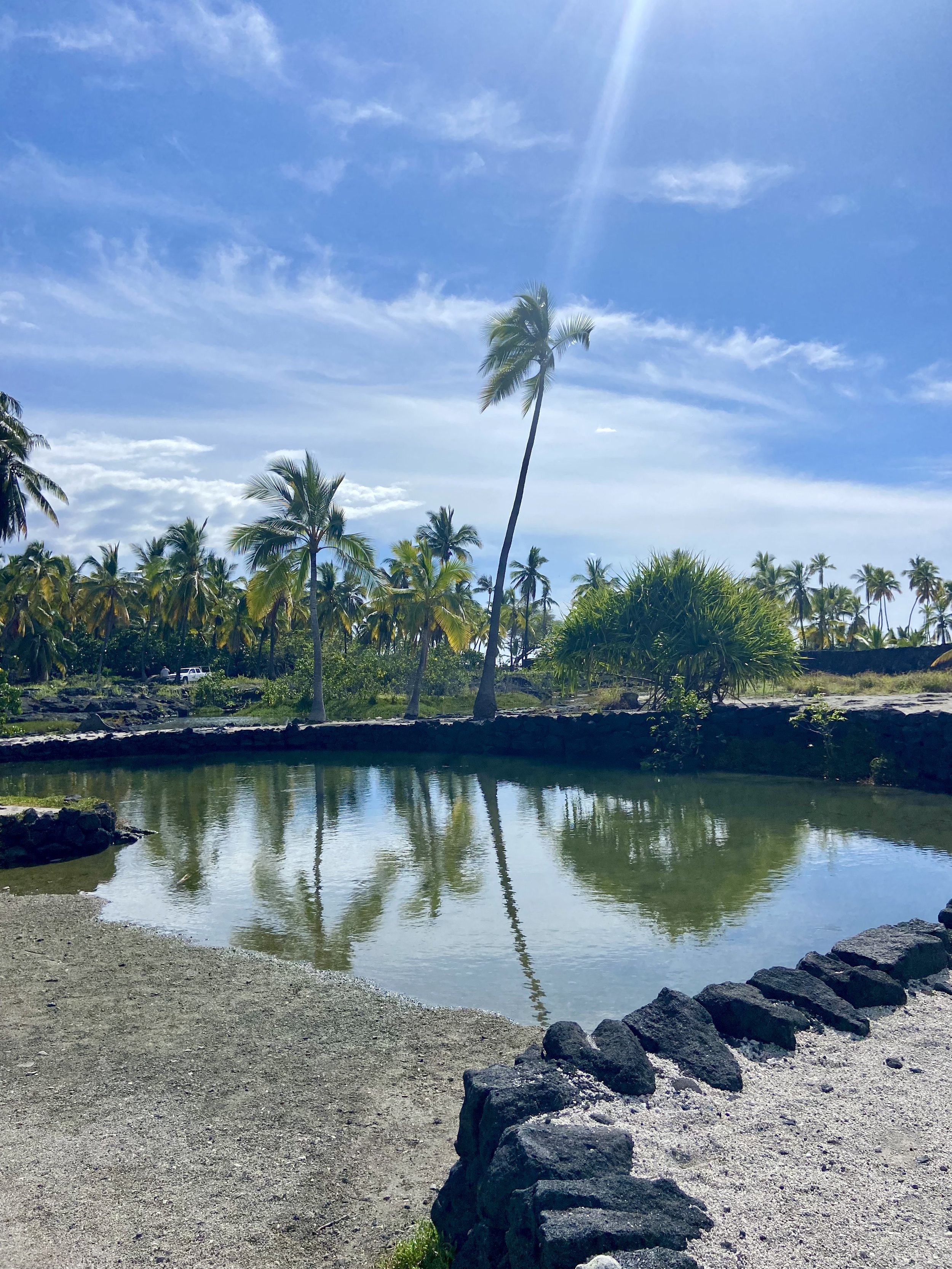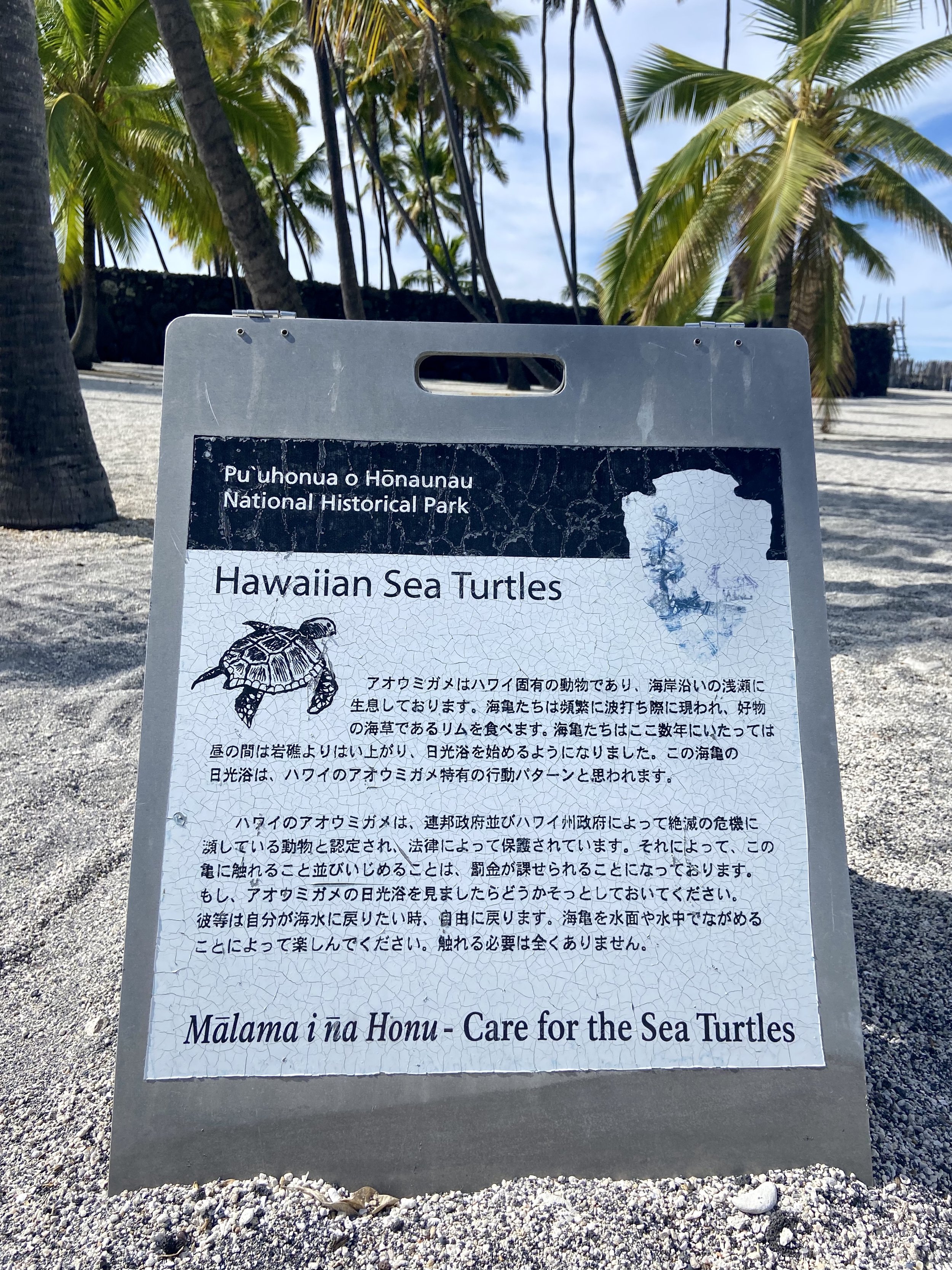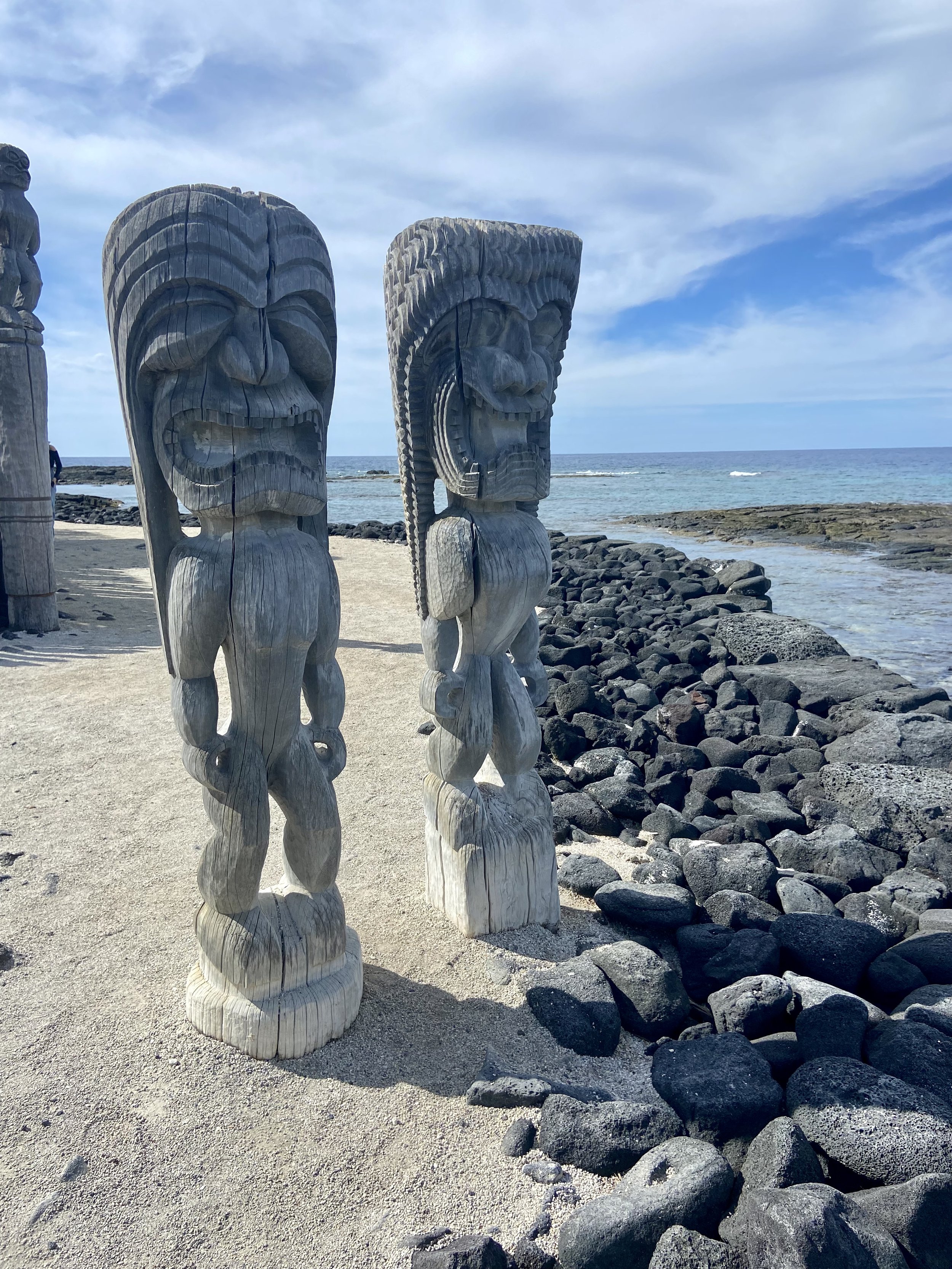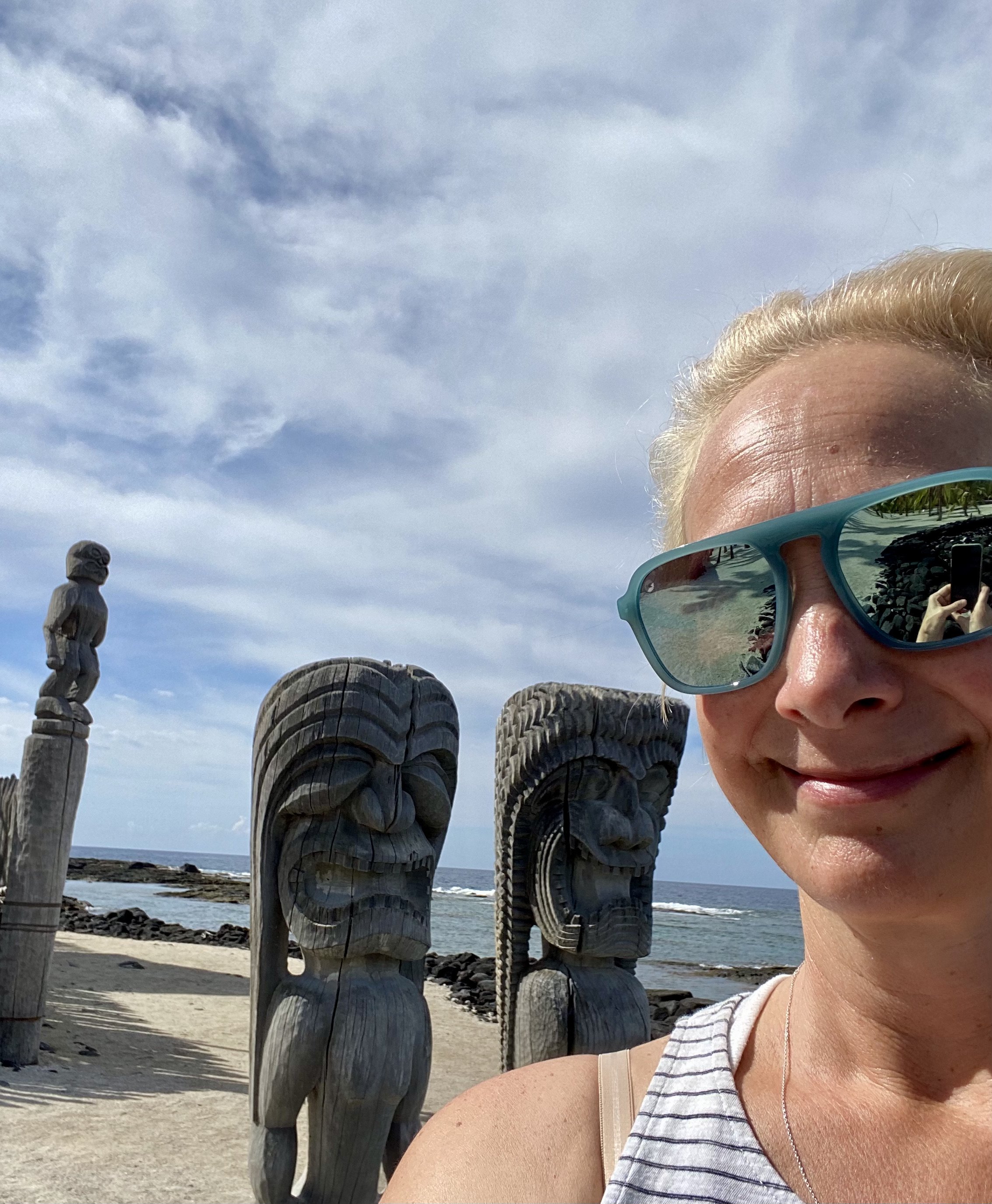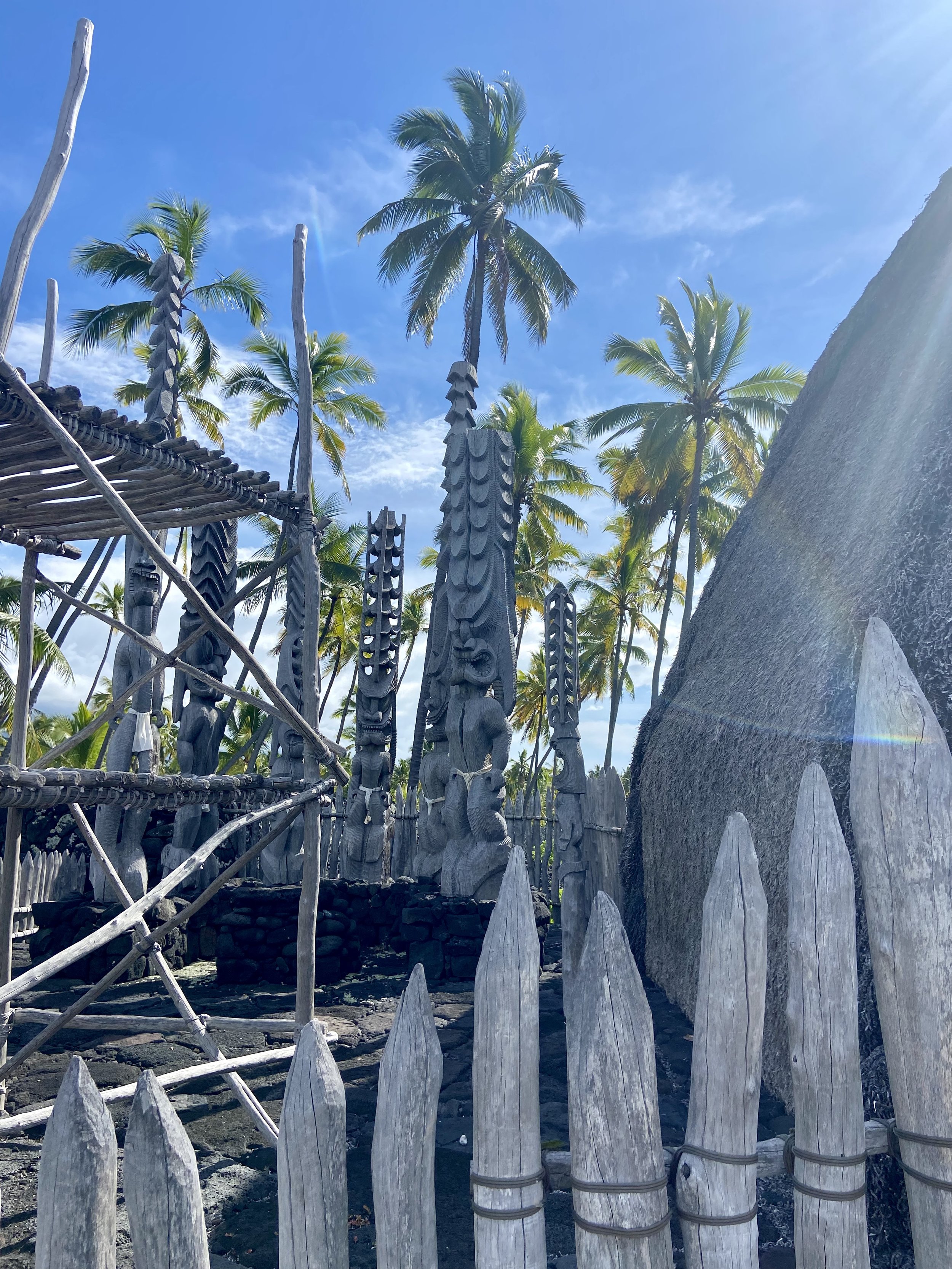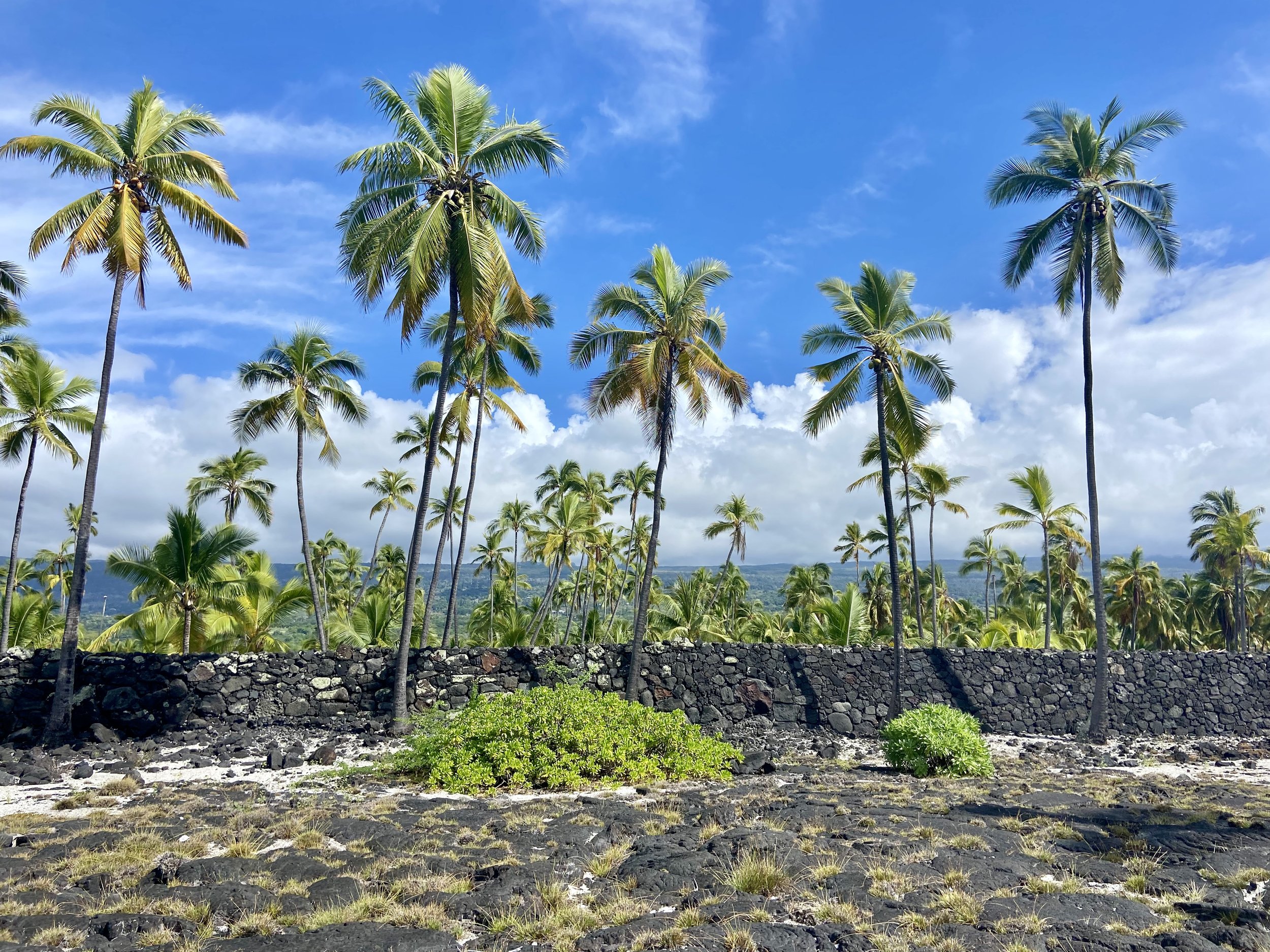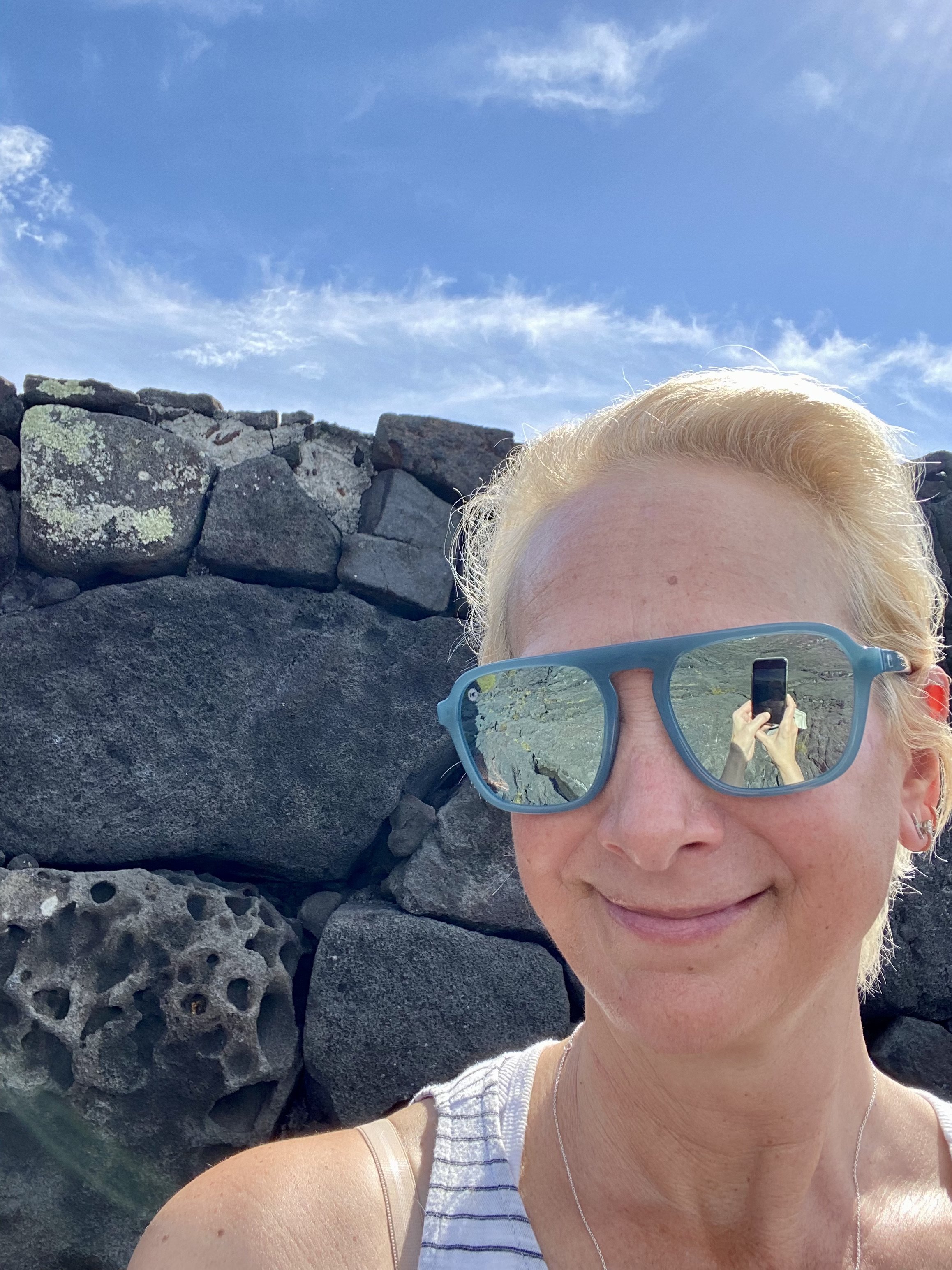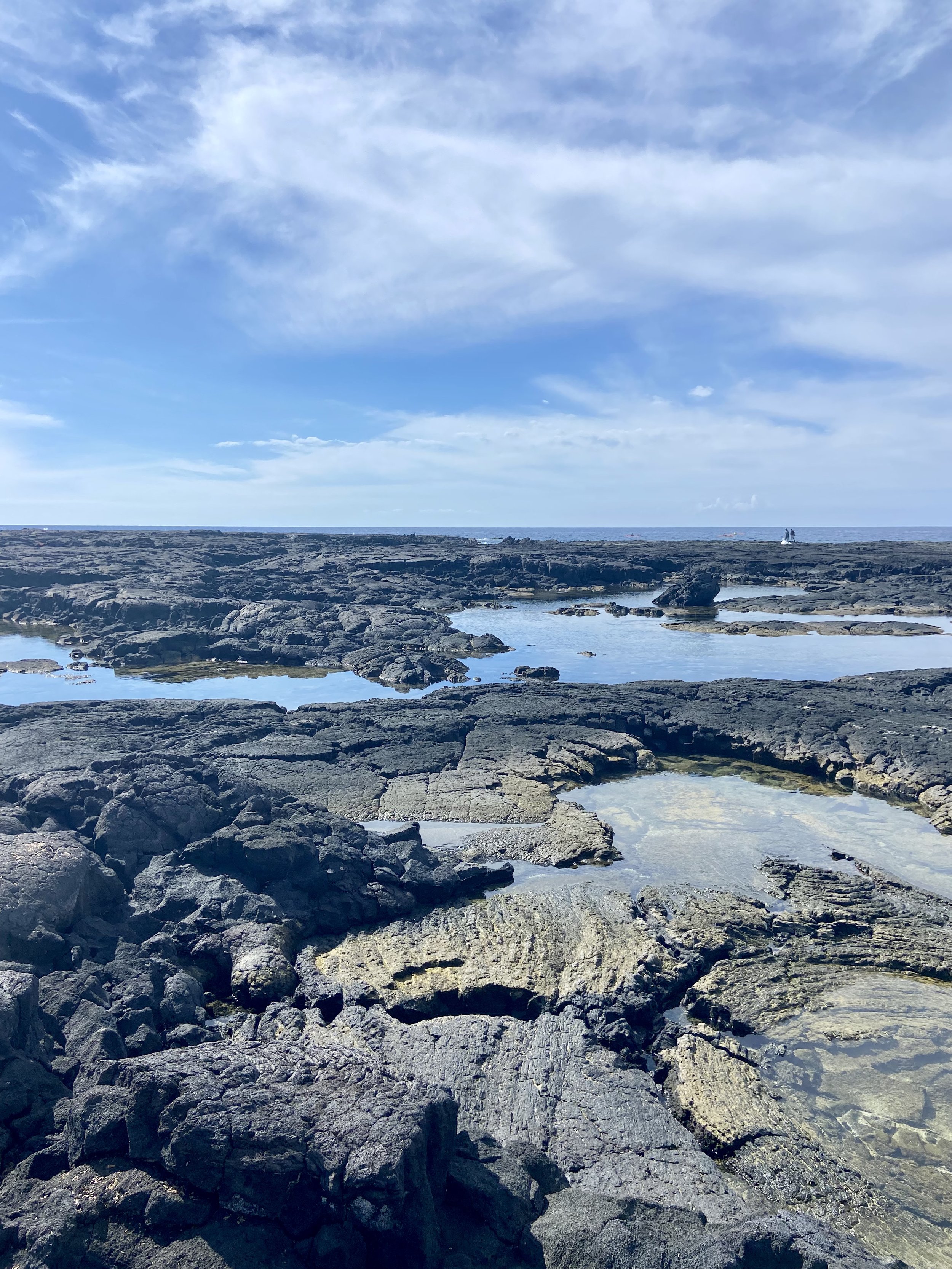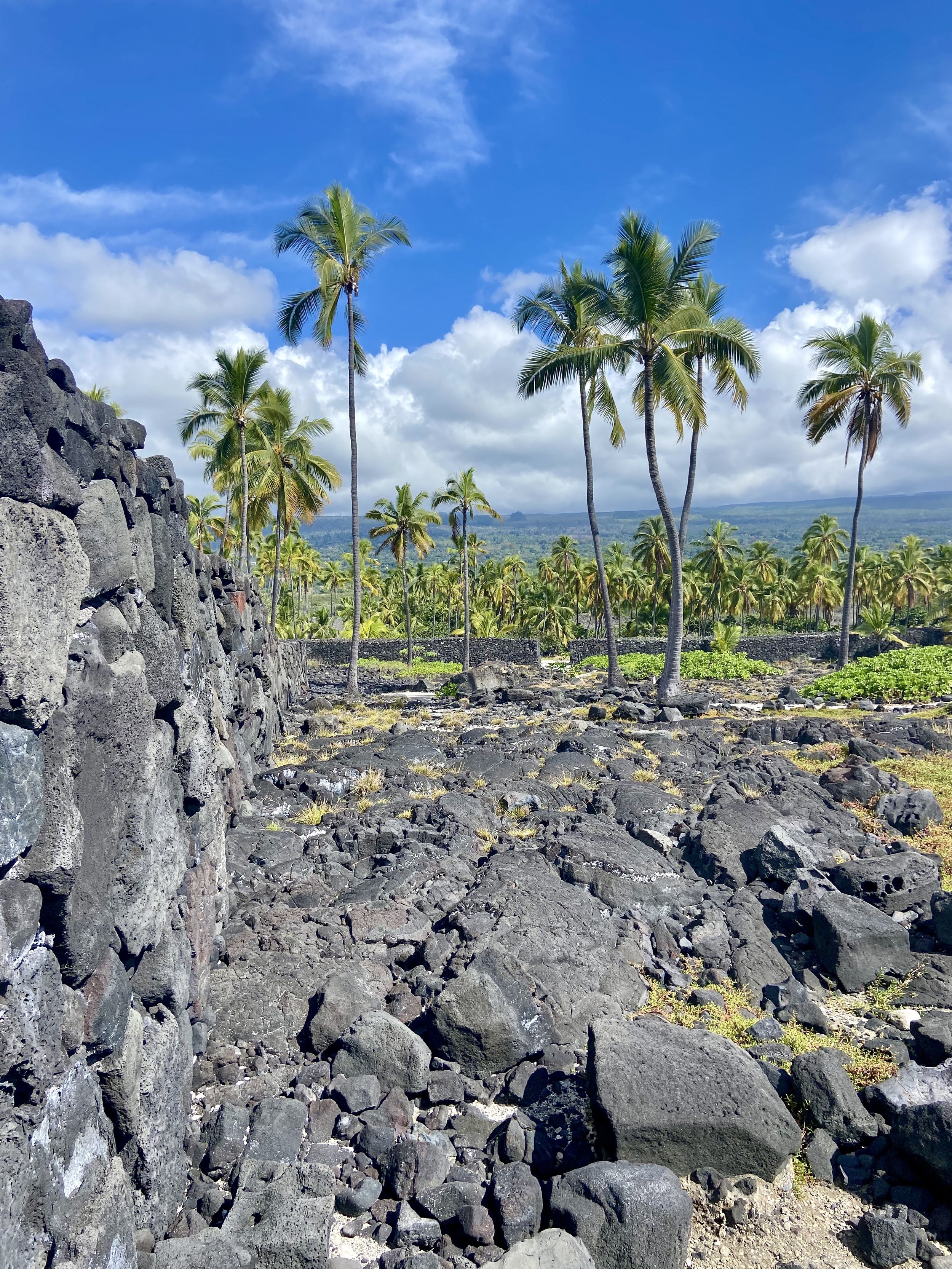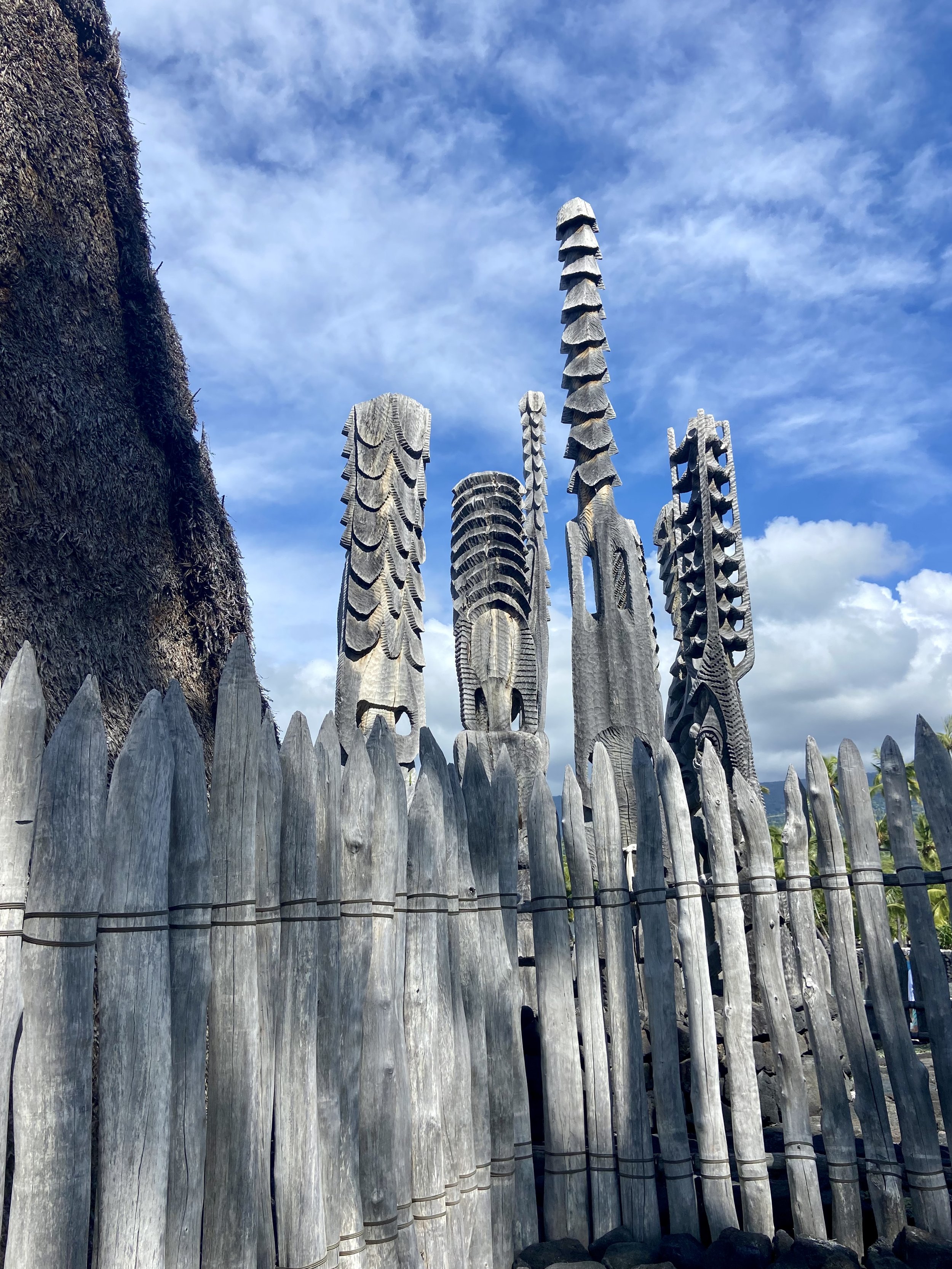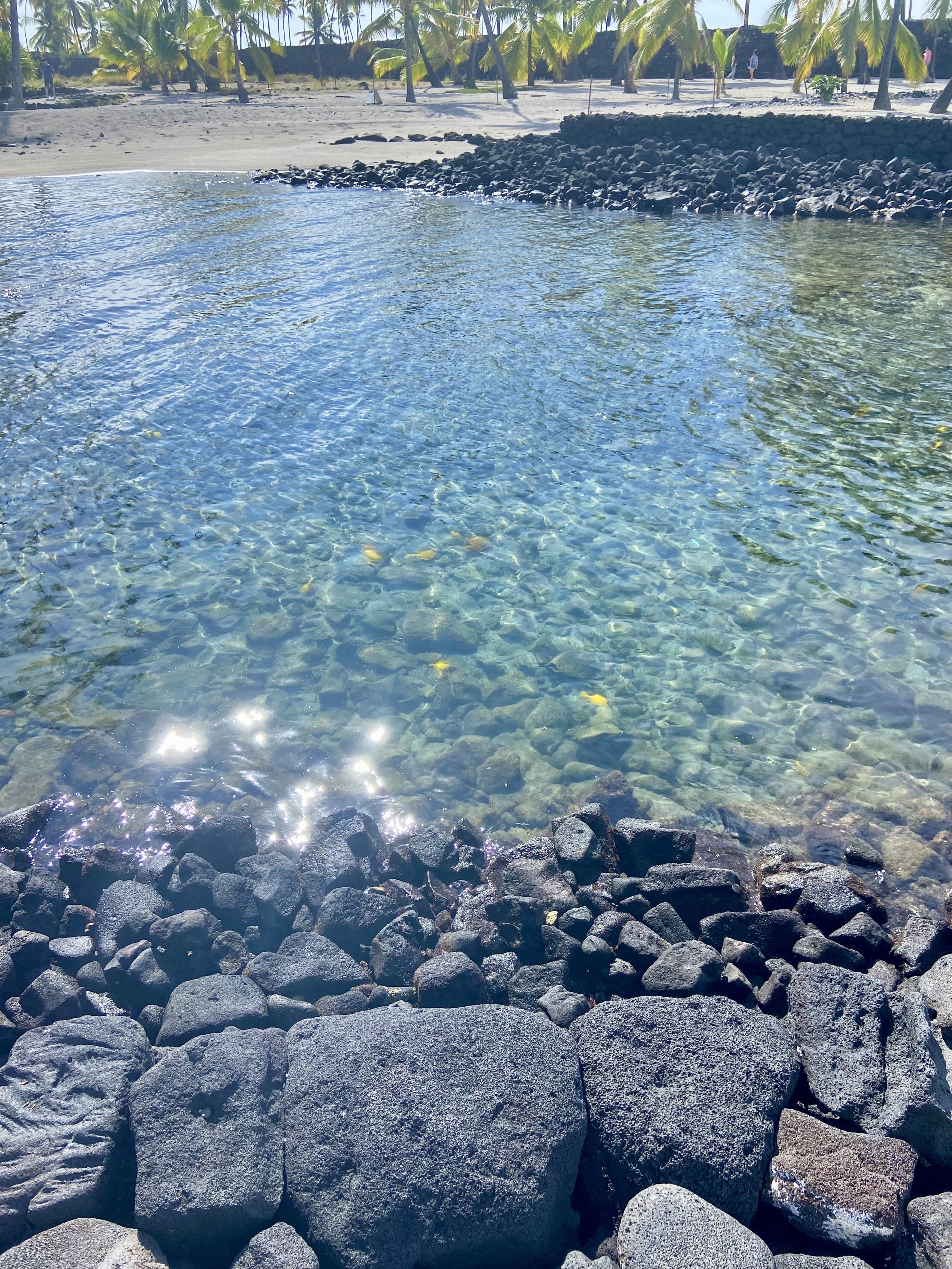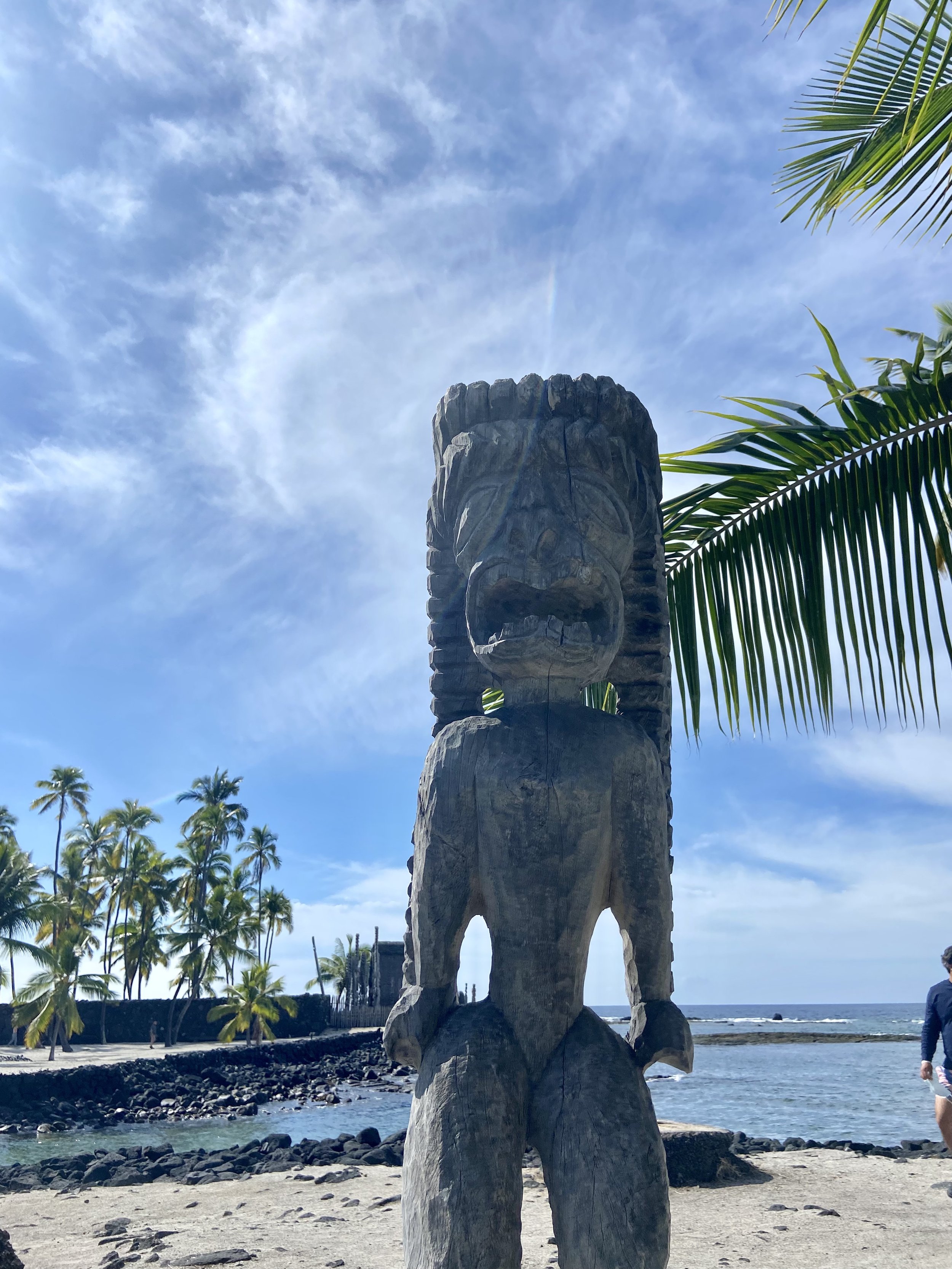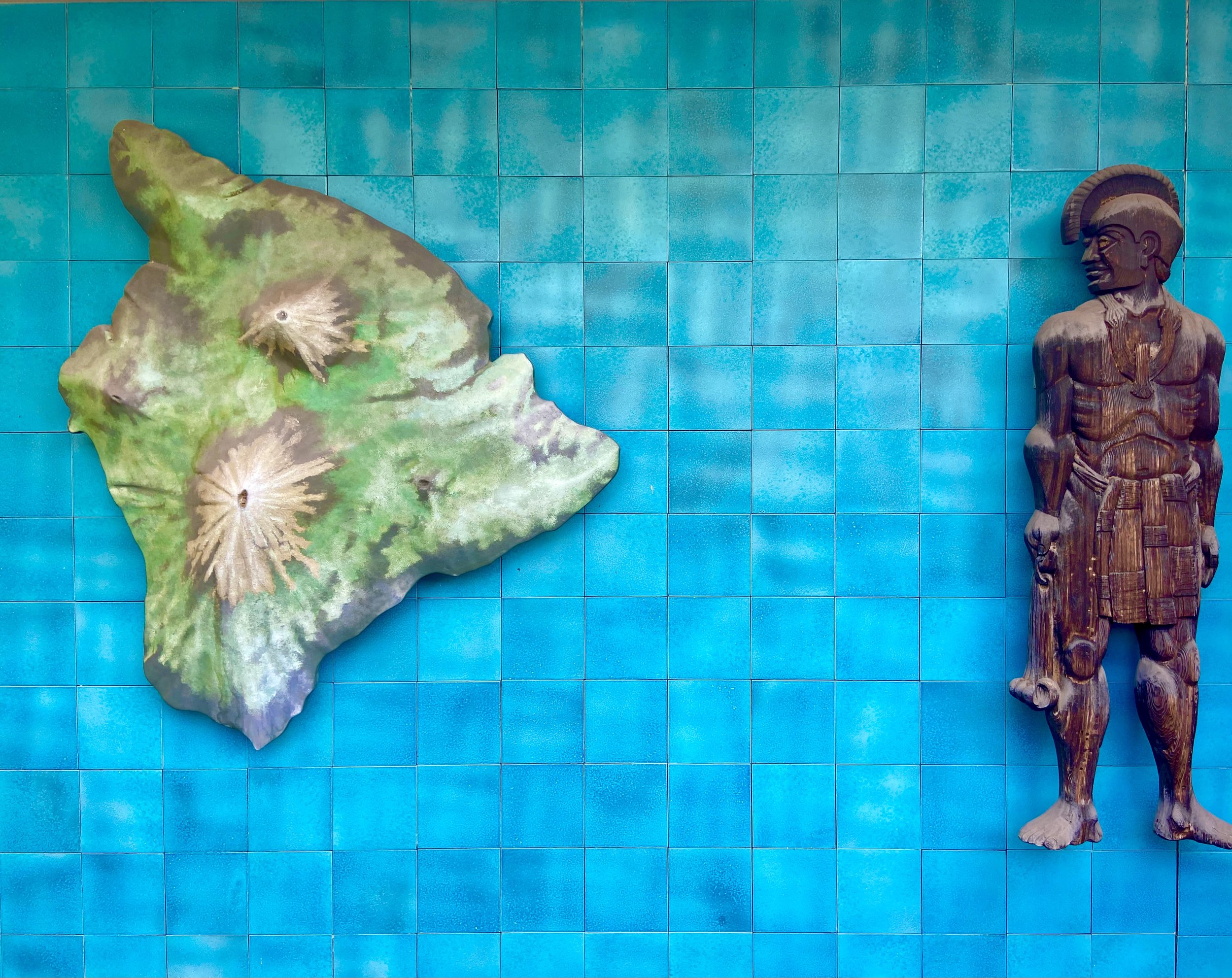Puʻuhonua o Hōnaunau National Historical Park
I feel so safe traveling to National Parks solo. On a mission to get my official stamp for Puʻuhonua o Hōnaunau National Historical Park, as I visited here before with the boys when they were young, my family dropped me off at the entrance while they secured a parking spot at the near-by snorkeling destination, Two-Step. I happily walked through the parking lot with my mask on, ready to revisit the Place of Refuge. When I arrived, I inquired with a friendly Ranger where to get my stamp. She showed me the station, which was occupied by a fellow Park Chaser. Said Park Chaser was was very concerned that the stamp was not working correctly and not stamping crisply as the lettering was all smudged-up. But another Ranger assured us that it was due to the humidity, over-use and plus a serious COVID delay on getting a new one. She assured us the date would pop, which would official record our proof of experience. Once inside, I was quickly in awe of this park, of the story of the Hawaiian people, and of the pure beauty forged on and out of lava. For it is not nature alone, but the story of indigenous people’s fight to survive. As I stood at the edge of the earth, on an island in the Pacific, I felt so fortunate to learn more about this dynamic land and its people.
My instagram post from my first visit to the park on March 10, 2012 (back when Instagram had decorative boarders … I miss the boarders!)
The first time we visited the Puʻuhonua o Hōnaunau National Historical Park it was called the City of Refuge. The boys loved exploring the magical Hawaiian grounds. Next door there is an amazing snorkeling spot called Two Step and I love to sit there and look out at the beauty of this park.
“Imagine you had just broken the sacred laws, the kapu, and the only punishment was death. Your only chance of survival is to elude your pursuers and reach the Puʻuhonua, a place of refuge. The Puʻuhonua protected the kapu breaker, defeated warriors, as well as civilians during the time of battle. No physical harm could come to those who reached the boundaries of the Puʻuhonua.
Puʻuhonua o Hōnaunau is an important Hawaiian ceremonial site bounded on its southern and eastern sides by a massive L-shaped wall, known as the Pā Puʻuhonua (Great Wall), and on its northern and western sides by the ocean. In addition to the Great Wall, within the Puʻuhonua are several other important ceremonial structures including the Hale o Keawe, ʻĀleʻaleʻa Heiau, and the Ancient Heiau.
In ancient Hawai'i a system of laws known as kānāwaienforced the social order. Certain people, places, things, and times were sacred -- they were kapu, or forbidden. Kapu (sacred law) regulated fishing, planting, and the harvesting of other resources. Any breaking of kapu disturbed the stability of society, and the punishment was often death. Any fugitive who had broken kapu could seek refuge and forgiveness within the walls of the Puʻuhonua. In addition, in the event that war was declared, families of combatants could seek refuge and safety within the Puʻuhonua and be assured to return home unmolested on cessation of battle regardless of the outcome. Although many pu'uhonuaexisted in ancient Hawaiʻi, Pu'uhonua o Hōnaunau is the best preserved and most dramatic given the extent of its monumental architecture.
The concept of refuge in Hawaiʻi is an ancient one, with roots found in the larger Polynesian culture. Traditional accounts indicate that a ruling chief of a kingdom could declare certain lands or heiau (sacred structures) as puʻuhonua, and as long as they retained undisputed power these designations would remain in force. Unfortunately, no absolute chronology exists for dating the original establishment of Puʻuhonua o Hōnaunau. However, rough estimates can be made based on genealogies and traditional accounts. Some have indicated that the Puʻuhonua may have originally been established by ʻEhu kai malino, ruling chief of Kona, around 450 years ago.”

